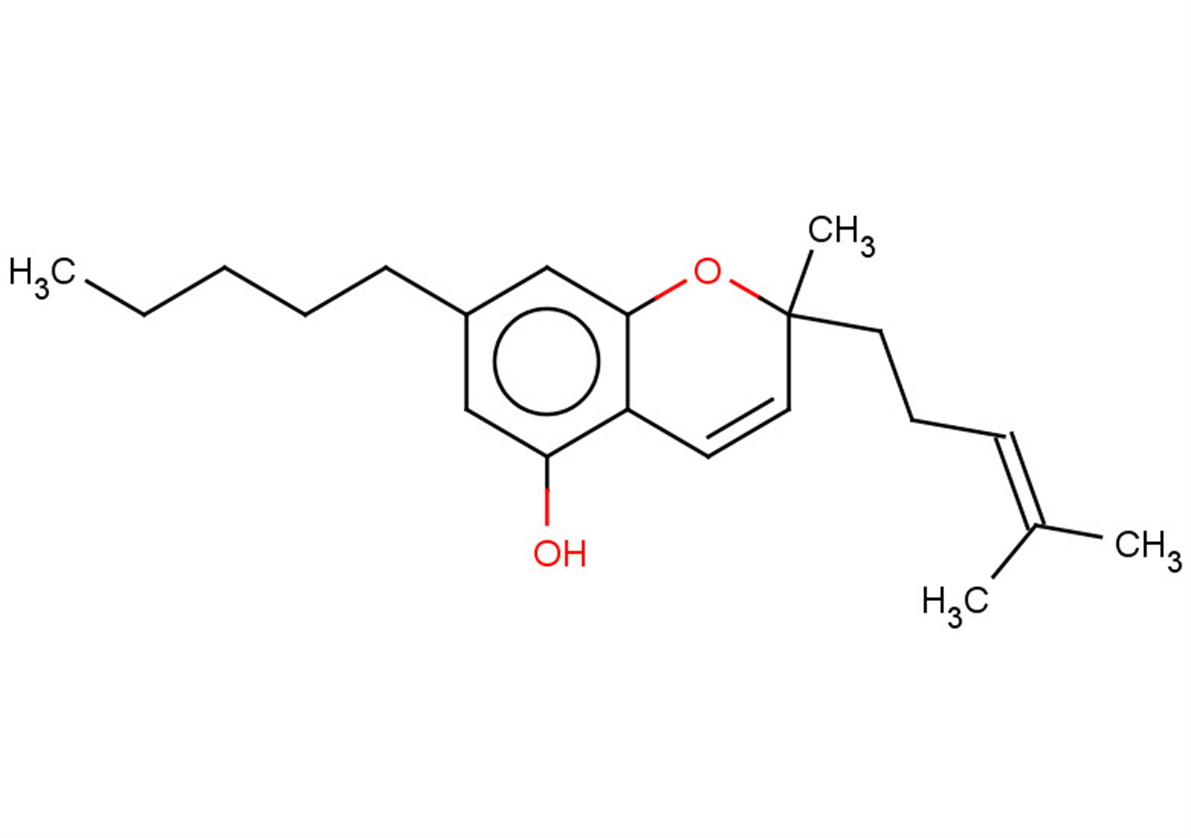
Cannabichromene
CAS No. 20675-51-8
Cannabichromene( Cannabichrome )
Catalog No. M23926 CAS No. 20675-51-8
Cannabichromene is a major non-psychotropic phytocannabinoid that inhibits endocannabinoid inactivation and activates the transient receptor potential ankyrin-1 (TRPA1).
Purity : >98% (HPLC)
 COA
COA
 Datasheet
Datasheet
 HNMR
HNMR
 HPLC
HPLC
 MSDS
MSDS
 Handing Instructions
Handing Instructions
| Size | Price / USD | Stock | Quantity |
| 5MG | 389 | In Stock |


|
| 10MG | 565 | In Stock |


|
| 25MG | 887 | In Stock |


|
| 50MG | 1188 | In Stock |


|
| 100MG | 1611 | In Stock |


|
| 500MG | 3231 | In Stock |


|
| 1G | Get Quote | In Stock |


|
Biological Information
-
Product NameCannabichromene
-
NoteResearch use only, not for human use.
-
Brief DescriptionCannabichromene is a major non-psychotropic phytocannabinoid that inhibits endocannabinoid inactivation and activates the transient receptor potential ankyrin-1 (TRPA1).
-
DescriptionCannabichromene is a major non-psychotropic phytocannabinoid that inhibits endocannabinoid inactivation and activates the transient receptor potential ankyrin-1 (TRPA1), it selectively reduces inflammation-induced hypermotility in vivo in a manner that is not dependent on cannabinoid receptors or TRPA1.
-
In Vitro——
-
In Vivo——
-
SynonymsCannabichrome
-
PathwayGPCR/G Protein
-
TargetCannabinoid Receptor
-
RecptorCB2
-
Research Area——
-
Indication——
Chemical Information
-
CAS Number20675-51-8
-
Formula Weight314.5
-
Molecular FormulaC21H30O2
-
Purity>98% (HPLC)
-
Solubility——
-
SMILESCCCCCc1cc(OC(C)(CCC=C(C)C)C=C2)c2c(O)c1
-
Chemical Name——
Shipping & Storage Information
-
Storage(-20℃)
-
ShippingWith Ice Pack
-
Stability≥ 2 years
Reference
1.The effect of cannabichromene on adult neural stem/progenitor cells. Neurochem Int. 2013 Nov;63(5):432-7.
molnova catalog



related products
-
SR 144528
A highly potent, selective and orally active antagonist of CB2 receptor with Ki of 0.6 nM.
-
Alismoxide
Alismoxide has anti-inflammatory effects.
-
AM-2201
A synthetic cannabinoid that acts as a potent, nonselective full agonist for the cannabinoid receptor with EC50 of 38 and 58 nM for CB1 and CB2, respectively.



 Cart
Cart
 sales@molnova.com
sales@molnova.com


